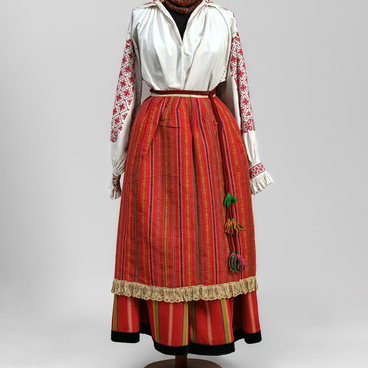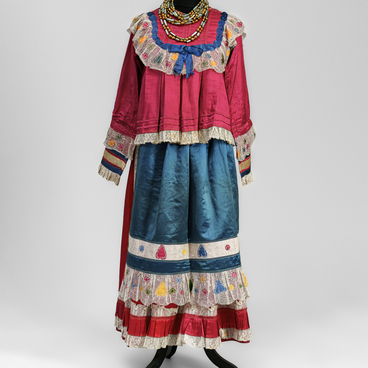Traditional women’s clothing was incredibly diverse in terms of style, décor, and wearing manner. The traditional dress of female peasants in the Southern Great Russian Governorates was distinguished by the use of a “ponyova”, a unique homespun skirt made of several panels of woolen fabric.
The collection of the Lipetsk Regional Museum of Local Lore includes a ponyova that was woven from dark brown wool threads using a weaver’s loom at home. Large colorful squares were created by weaving red, white, and yellow threads onto the fabric. The hem of the skirt is decorated with ornate woolen braid. Two strips of colorful factory-made rick rack trimming are sewn on top. At the top, the ponyova is held together by a gashnik — a special cord made of hemp threads. It is gathered in large decorative folds at the waist, making the garment puffy. A festive zaveska — an apron with sleeves — is worn over the skirt and undershirt. It is made of white linen patterned fabric and has a straight cut with a yoke. The set-in sleeves are wide, tapered at the wrist. The trapezoidal neckline is low. The hem is edged with a strip of red factory-made fabric known as “kumach”. It features colorful embroidery using various techniques: counted-thread, tambour, and satin stitch embroidery. There is a strip of metal fringe sewn over the kumach fabric. The embroidered pattern on the lower band features archaic female figures with raised arms, symbolizing Mother Nature, alternating with stylized tree silhouettes. The upper band includes alternately arranged elements — the tree of life and an eight-pointed star symbolizing the sun.




